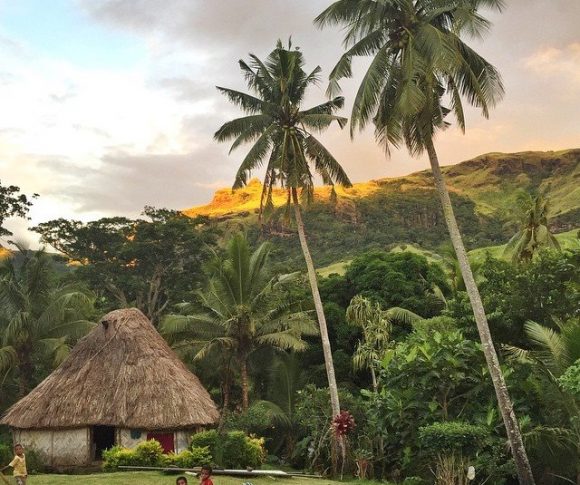By clicking submit, I consent to my personal data being collected, stored, and processed by Think Pacific in accordance with our Privacy Policy.
A Fijian Perspective…
This section explores how Fiji is approaching the subject of climate change. It is one of the hottest topics on the lips in Fiji as it is already resulting in alarming statistics in regards to natural disasters that have immediate implications for livelihoods and lifestyle for an island nation. Throughout this section, reflect on the Fijian perspective and why it is important to be valued, why it might be different than perspectives around the globe, or even your own! On a practical level, how can a country’s economic status determine its approach to driving sustainable development? Should Fiji heavily invest in becoming carbon neutral, or to build structurally improved housing and infrastructure to protect its citizens from environmental impact? Take a look and and see what you think…
But first, let’s consider the use of language…
What is a ‘developing’ country?
The appropriate use of the terms ‘developing’ or ‘developed’ countries comes under significant scrutiny. This is because it automatically associates generally more Western ideals with the status of ‘developed,’ with the term ‘developing’ often being branded on countries by Western nations and even internalised. What constitutes ‘developed’ relies on ones definition of what ‘development’ is and that country’s status in its attainment in comparison to others. Measures that are generally considered indicators of development are variables like access to health care, access to education, economic strength, distribution of public infrastructure. But as we have explored, sustainable development elicits “having the freedom to lead the kind of lives that we have reason to value.” Being ‘developed’ indicates that there is some sort of bar being set with potentially more complex factors such as community strength, sense of identity, cultural richness and environmental symbiosis being harder to quantify and therefore occasionally not considered.
In addition, the misuse of these terms can have a tangible economic impact through reinforcement of destructive power dynamics as is explored in the article below:
Read this ArticleBut, regardless of these terms being relatively sweeping and generally pointing mainly to economic factors, a country’s economic status and capital potential seriously effect the means of which that they can approach tackling climate change. ‘Developing’ is certainly a word we should be globally reconsidering, but when it comes to financial investment in green technologies, the realities of the capitalist world-system is that some countries have more power and potentially responsibility than others; climate change is a challenge for all.
Not all countries are effected by climate change in the same way or the same rate, and Fiji is firmly on the critical side of the scale with rising sea levels, increased velocity and frequency of natural disasters and environmental degradation having immediate and scary effects in Fiji.
Learn more about Fiji’s approach to sustainability and some of the lived experiences of challenges faced by both urban and rural regions. It covers not only the challenges faced but Fiji’s strategic response to contribute to global solutions to climate change:
Inclusive socio-economic Development – will ensure that all socio economic rights in the Constitution are realised. Inclusivity will be at the centre of growth and development, and the benefits of prosperity will be spread as widely as possible to improve the social well-being of all Fijians. No one will be left behind regardless of geographical location, gender, ethnicity, physical and intellectual capability and social and econom
Become aware of some of the major impacts of global climate change on Fiji
As a Small Island Developing State, Fiji is severely impacted by both the slow and sudden onsets of climate change induced by global dependence on unsustainable fossil fuels. Rising sea levels engulfing low-lying coastal communities, saltwater intrusion reducing arable land, changing weather patterns impacting food security, and catastrophic cyclones reversing years of development progress while threatening fiscal stability are some of the major climate-induced adversities Fiji faces. These adversities tremendously impact sustainable livelihoods, security and well-being and contribute to an increased incidence of poverty and undue pressure on social services.
Fiji is an archipelago consisting of more than 332 islands dispersed over 1.3 million km2 of the ocean in the South Pacific region. Out of this, 110 islands are permanently inhabited, with diverse landscapes and climate. The islands are characterised by diverse ecosystems including significant areas of natural forest and wide ranges of coastal and marine ecosystems from broad expanses of mangroves to various coral reef formations.
“Unless the world acts decisively to begin addressing the greatest challenge of our age, then the Pacific, as we know it, is doomed,”
Frank Bainimarama, COP23 President and Past Fiji Prime Minister
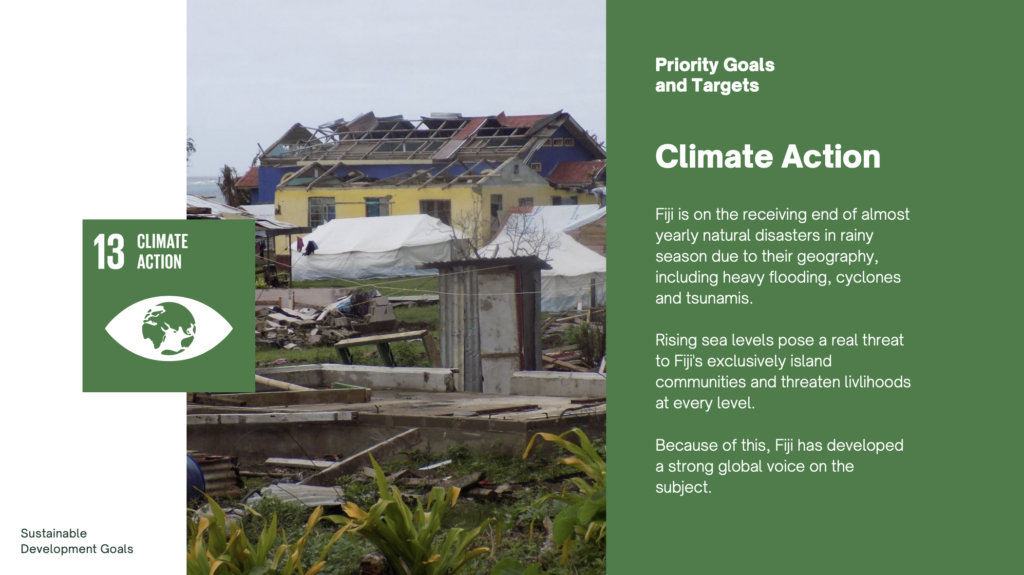
With rising temperatures, Fiji’s already at-risk geographic position for hurricanes and tropical cyclones is escalated with cyclones becoming almost a yearly occurrence. Under the UNFCCC and IPCC’s categories, Fiji is categorised as a ‘vulnerable’ small island nation under serious threat from various climate change impacts. This includes extreme weather events.
Case Study: Cyclone Winston
Cyclone Winston was the biggest cyclone ever recorded in the Southern Hemisphere, and swept through Fiji in February 2016.
Total Damage: $1.4 billion USD
Lives Lost: 44
People seriously impacted: 350,000
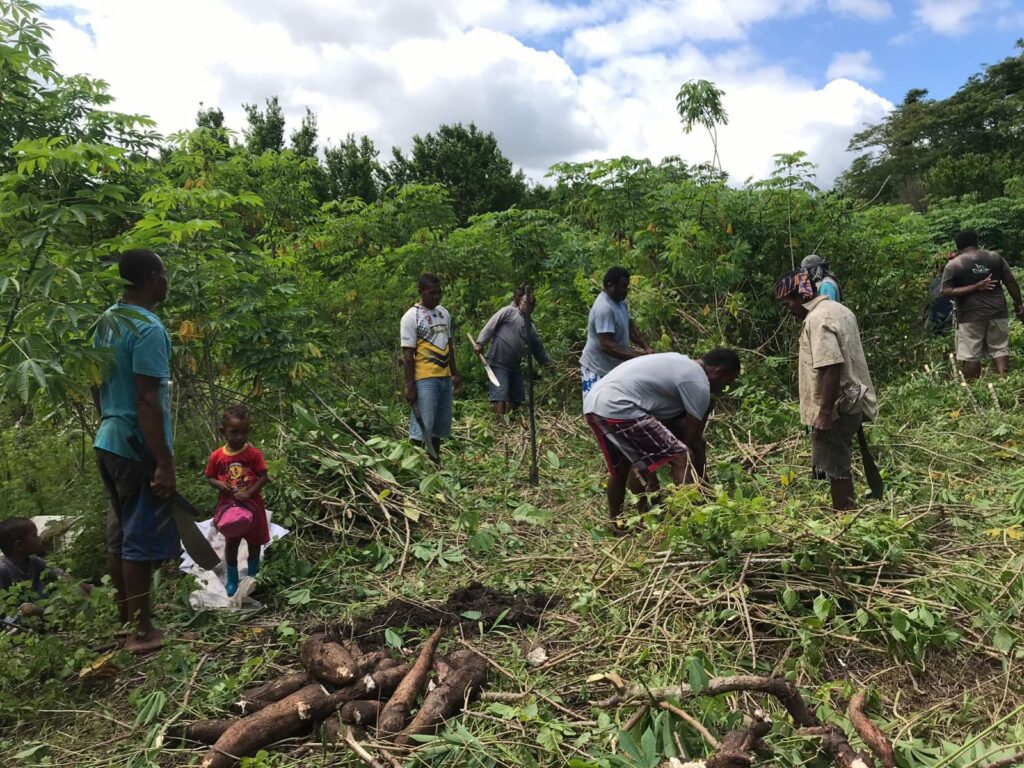
All Crops Are Washed Away…
‘At least USD 80 billion in crop and livestock production has been lost in developing countries over the past decade after disasters (FAO)’.
This highlights the importance of developing our food security in order to sustain life…
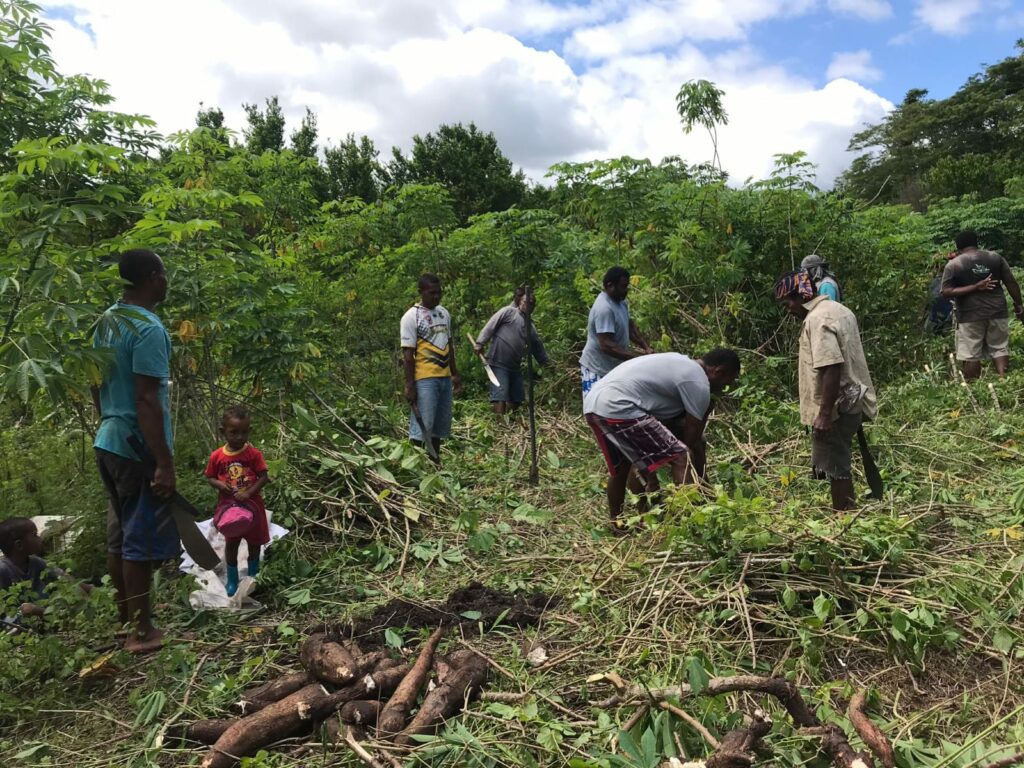
Personal Impact
The Guardian: When Tropical Cyclone Winston struck Abhishek Sapra’s farm exactly four years ago, the damage was monumental. Sapra suffered losses of over $F500,000 (US$227,000).
Here’s a short documentary of relief efforts being unloaded on Koro island by Think Pacific Co-founder Harry, following Cyclone Winston. It gives you a detailed view of the destruction that a cyclone of this magnitude can deliver:

The Expanding Bullseye Effect
‘The Expanding Bullseye’ theory suggests that the increasing financial damage seen as a result of natural disasters may be due to changes in society that have resulted in denser populations in climate vulnerable areas and an increase in infrastructure in these locations.
Thoughts: How can we adapt and limit the costs of natural disasters?
To read more on Pacific Climate vulnerabilities:
Climate Vulnerability Assessment – Launched at COP23Climate change threatens the sustainability and habitability of coastal communities and environments. In 2018, researchers reported that the world’s mean sea level had risen by more than seven centimetres since 1993 due to the expansion of warming ocean waters and melting ice sheets and glaciers. Should atmospheric CO2 concentration continue to rise rapidly, sea levels could rise up to one metre by 2100.
The Government of Fiji has indicated that 830 vulnerable communities require relocation due to risks from climate-related impacts. Of these, 48 communities have been identified as being in urgent need of relocation.
In 2014, residents of the small village of Vunidogoloa in Fiji were left with no choice but to relocate. Their village had been experiencing increasing coastal erosion, saltwater intrusion, and flooding over recent years.
With the support of the Government of Fiji and international agencies, they relocated to higher lands two kilometers from their old home. While some infrastructure still needs to be built, relocation has reduced their exposure to climate risks and protected the community’s future.
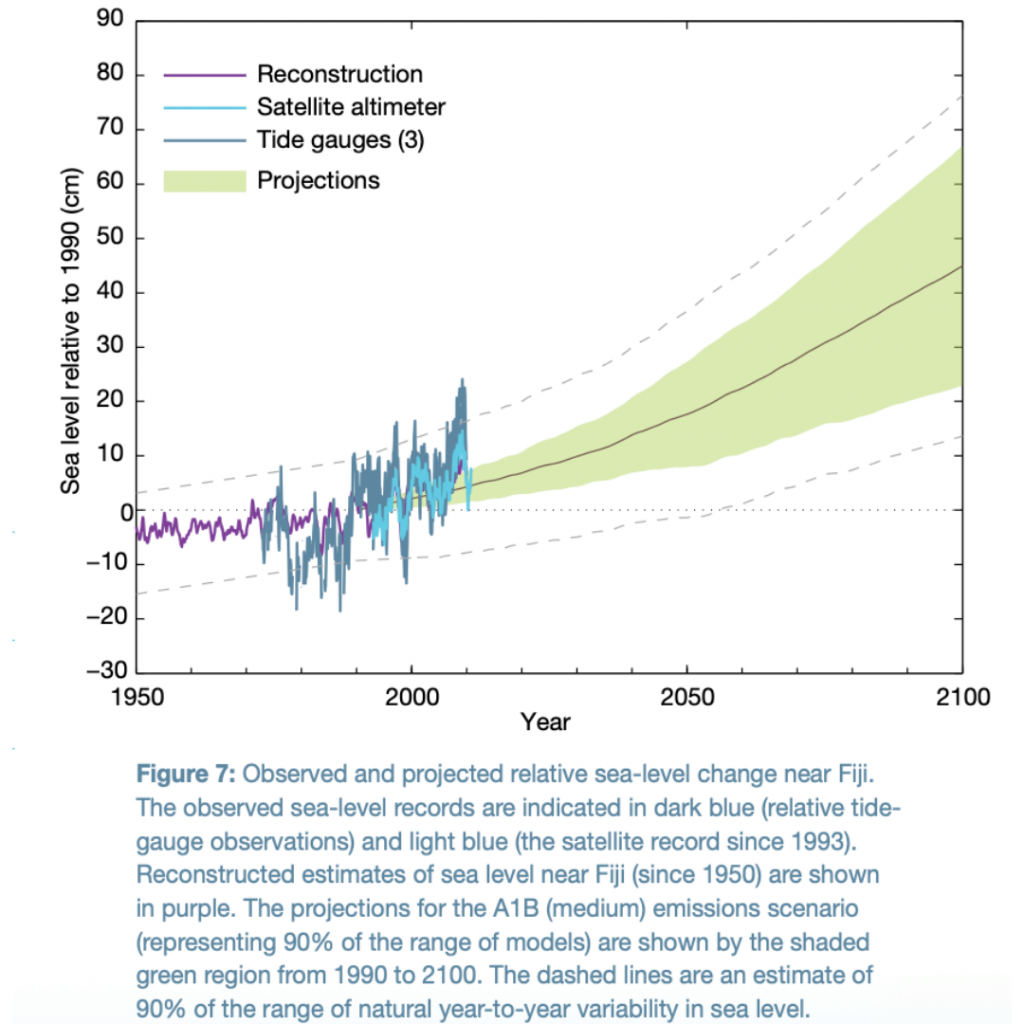
Planned relocation in Fiji is a relatively new response to the effects of climate change, and it is only viewed as a last resort. Relocation is a complex process and can be traumatic for those involved. It is not just a case of economics and physical structures, there are a number of complex, non-tangible aspects associated with relocation, which can include challenges to identity, as well as various psychological, social, emotional and cultural damages.
As ocean water warms it expands causing the sea level to rise. Instruments mounted on satellites and tide gauges are used to measure sea level. Satellite data indicate sea level has risen in Fiji by about 6 mm per year since 1993.
This is larger than the global average of 2.8–3.6 mm per year. This higher rate of rise may be partly related to natural fluctuations that take place year to year or decade to decade caused by phenomena such as the El Niño-Southern Oscillation. The natural variation in sea level can be seen in Figure 7 which includes the tide gauge record since 1972 and the satellite data since 1993.
Saltwater intrusion has huge impacts on sugar cane farmers. With sugar cane as Fiji’s most prominent export, the longer-term impacts here could be devastating.
Watch this video which explores the impacts of climate change at a community level.
Saltwater intrusion from coastal flooding destroys farmland, disrupting the supply of staples in the Fijian economy and forcing communities to migrate to safer ground. The damages sustained to Viti Levu, Fiji’s most populous island, total some $52 million per year, or 4 percent of Fiji’s GDP. It contributed to the relocation of Vunidogoloa.
Annual maximum and minimum temperatures have increased in both Suva and Nadi since 1950. In Suva, maximum temperatures have increased at a rate of 0.15°C per decade and at Nadi Airport the rate of increase has been 0.18°C per decade. These temperature increases are consistent with the global pattern of warming.
About one-quarter of the carbon dioxide emitted from human activities each year is absorbed by the oceans. As the extra carbon dioxide reacts with seawater it causes the ocean to become slightly more acidic. This impacts the growth of corals and organisms that construct their skeletons from carbonate minerals. These species are critical to the balance of tropical reef ecosystems. Data shows that since the 18th century the level of ocean acidification has been slowly increasing in Fiji’s waters.
Tropical cyclones usually affect Fiji between November and April, and occasionally in October and May in El Niño years. In the 41-year period between 1969 and 2010, 70 tropical cyclones passed within 400 km of Suva, an average of one to two cyclones per season. Over this period, cyclones occurred more frequently in El Niño years.
For Fiji as with other countries, the impetus for green growth emanates from the need to better harness natural resources, reduce vulnerability to environmental risks and promote socially inclusive development. Population growth, increasing urbanisation, unsustainable consumption and resource use, infrastructure deficits and increasing frequency of natural disasters due to changing climate heighten the risk of food and energy insecurity and threaten economic and social progress. Left unchecked, natural capital and in particular biodiversity, will steadily decline due to overexploitation of natural resources; invasive species; poor waste management and increasing pollution damage.
Government Commitment to a Green Future:
-Doha Amendment; signatories are to ensure that their greenhouse gases emissions do not exceed the assigned amounts, with a view to reducing their overall emissions at least by 18% below 1990 levels during the second amendment period (2013-2020)
-The first country to ratify the Paris Agreement
-Fiji developed its first National Energy Policy (NEP), which got Cabinet’s approval in 2006.
-Promote the development of indigenous energy sources such as hydropower, geothermal, solar, wind and biomass
-Promote energy efficiency and energy conservation in all sectors
-Strengthen energy security and improve energy supply mix for the country
-This was later reviewed and the 2013 NEP was formulated, led by the Ministry of Energy. The main outcomes were:
- To provide all Fijians with access to affordable and reliable modern energy services with the aim of a 100% electrification rate;
- To establish environmentally sound and sustainable systems for energy production, procurement, transportation, distribution, and end-use; and
- To increase the efficient use of energy and the use of indigenous energy sources to reduce the financial burden of energy imports on Fiji.
- Implementation of the Green Growth Framework (2014); to reduce carbon footprints at all levels
- National Adaptation Framework (2017)
Does a county’s wealth determine which approach is should take towards being sustainable? Should Fiji heavily invest in becoming carbon neutral, or to build better housing and infrastructure to protect its citizens from environmental impact? The first thing to consider in this question is the value added versus associated cost of sustainable interventions, otherwise known as a cost-benefit analysis
This video shows how ‘developed’ nations are able to use their knowledge and resources in order to design and implement greener energies.
Thought: How may these focuses be different from Fiji? How are they the same? Does Fiji have challenges that the UK doesn’t? And vice versa?
What is cost-benefit analysis?
When looking at a possible project, we need think about the wider implications that may be experienced as a result.
See this video to learn more about unanticipated consequences of a solar project.
Countries with smaller or limited budgets can use cost-benefit analysis to ensure that projects will meet their intended aims.
If the goal is to save human life, we need to ask how can we save the most lives within the budget that we have? Furthermore, what will then be the impact on the environment?
If the goal is to positively impact the environment, we need to ask how we can maximise the impact? Moreover, what will the effect be on human life?
Being able to analyse situations from multiple perspectives is a huge step forward for individuals to be able to.
Challenge of building infrastructure on a worldwide scale…
For nations with finite budgets and large percentages of the population in poverty, spending vast resources on electric vehicles may not be the most beneficial for their people. Questioning what is morally right from a human perspective vs. an environmental perspective…
Should a less economically developed country be driving the high cost developments of electric infrastructure? What will be the benefit for their population? Are there other cheaper areas which a less developed country can be a pioneer until electric infrastructure is more widely distributed? e.g. Renewable energy, public transport, responsible farming/logging/fishing, recycling schemes.
Access to clean water for drinking and bathing, and clean oceans and rivers are essential for Pacific Islanders. Pollution of our water and oceans can take away the basis of people’s livelihood, survival, and lifestyle. The negative cost of industrialisation, modernisation and unsustainable development has resulted in pollutants being deposited into our rivers and coastal areas.
– Filimone Tuivanualevu, USP Masters Student
The rivers and ocean systems are an integral part of Fijian life. Not only does the Fijian connection to land and sea, as determined by the concept of vanua (learn more in the Fijian Culture module), have cultural and spiritual grounding but they also act as a source for livelihood and significant community and national economic value.
The video above shows how villages in remote areas of Fiji deal with water and some of the challenges that they face in accessing it.
Thoughts to ponder:
Is clean water required to flush toilets, or can brackish/sea water water be used? What other ways can toilets can be flushed without water?
Water in the South Pacific – 2007 Report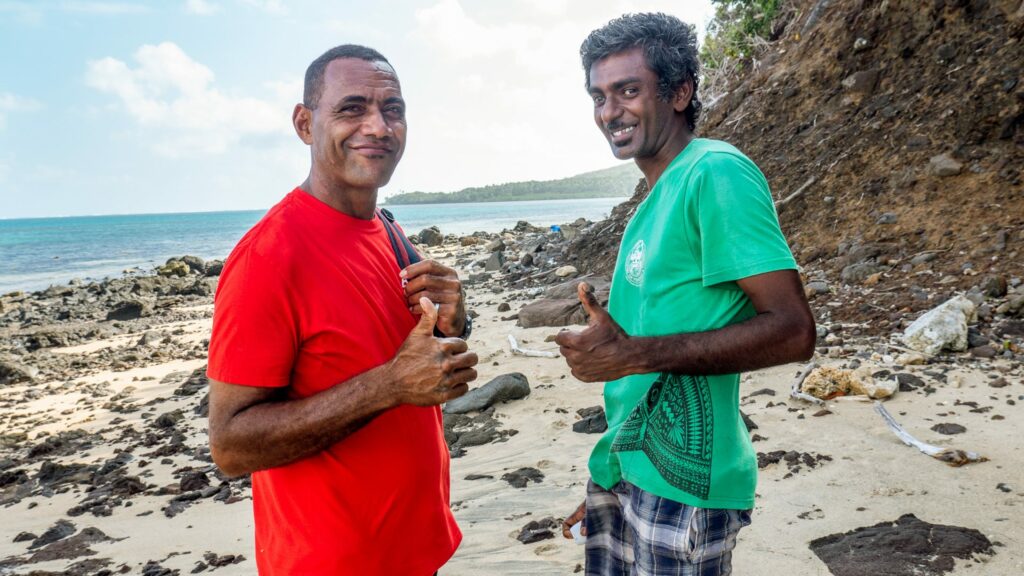
Exporting Fiji’s Water
Despite their being significant challenges in providing clean drinking water across Fiji, Fiji water is globally recognised as one of the most desirable bottled drinking waters.
This is one of Fiji’s biggest exports. Fishing
‘Tabu’ Fishing Areas
In Fiji, the word ‘tabu’ (pronounced ‘tam-boo’) means ‘forbidden’. In Fijian culture, certain areas of land of oceans are marked as ‘tabu’ areas in order to allow that particular area to revive and return back to its natural state. With regards to fishing, certain areas of a village’s reef may become tabu for a certain period of time before the area is then moved.
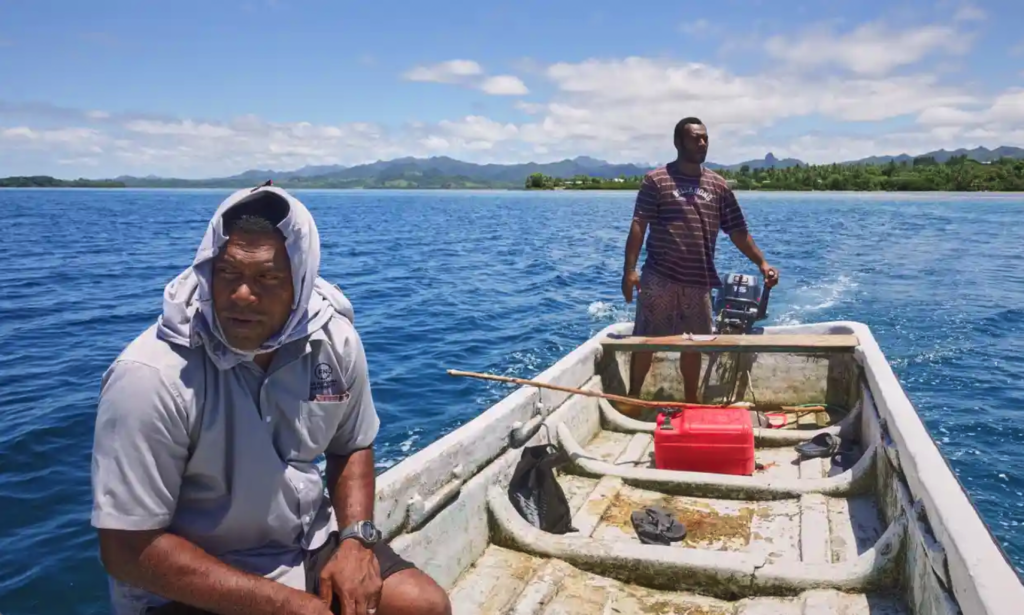
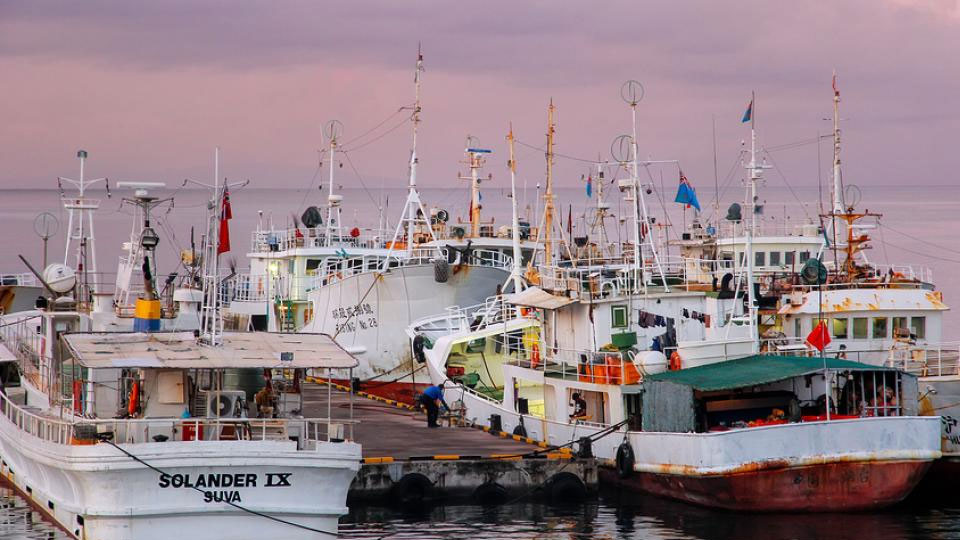
Overfishing in Fiji…
‘Fiji’s tuna boat owners say Pacific nations must cut the number of licences they give to foreign fishing fleets if they want to save the local industry.’
This article states that ‘approximately 75% of the domestic fleet have ceased operation in the last five years, with most fleets being able to catch less than 50% of the amount of fish needed for those companies to break even’.
‘Aquaculture’ is being considered as way of allowing fish stocks to replenish in the ocean.
The concept is through creating designated netted areas in the sea, or using concrete tanks on land, fish can be ‘farmed’ and the fish in the ocean can left alone. However, this idea has been criticised as the fish require large amounts of feeding, a lot of which comes from fish the sea. Other challenges are that the fish could escape the nets and travel to the ‘wild’, where they may introduce disease and devastate native species.
For both rural and urban areas of Fiji, implementation of an effective waste management system proves a huge challenge. Less than 100 years ago, the remote islands of Fiji had very little waste. However, as Fiji has increased its plastic production, as well as imports, new management systems have to be created to deal with non-reusable waste. Currently, the majority of rural Fiji dig burn bits for their rubbish, which can be detrimental to both the health of the individuals and of the land.
Although people in Fiji have a very low per capita carbon footprint compared to many other countries around the world (as seen in Module 2), an effective waste management system is required to ensure a safe future for all of the country. This was highlighted by Fiji’s Department of Environment as they stated that ‘open burning of waste has been identified… as a major source of air pollution in rural communities as well as squatter settlements as they do not have a waste collection system that is available in the urban areas’.
A thought to ponder: What ways can waste be disposed of in a rural village environment? Can the waste be recycled locally and effectively?
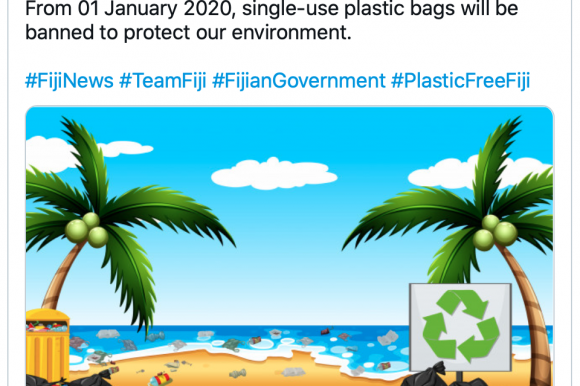
Consumption of single use check out bags was estimated in 2010 to be around 70 million per year in Fiji, with urban population use at around 150 per person per year. In 2004, a survey of three locations in urban Fiji found plastic bags at an average rate of one every seven meters over the 5.8km of roads surveyed.
Introduced in January 2020, the Fijian Government introduced a Plastic Bag Ban in their strive towards a ‘Plastic Free Fiji’.
On the outset this appears to be a significant step. However, in replacement of the single use plastic bags, thicker clear bags (>50microns thick) are being used in the same capacity: meaning more plastic manufactured and similar levels of pollution.
The next phase of the journey towards a ‘Plastic Free Fiji’ is the banning of polystyrene which, with Fiji’s significant culture of road side vendors and fast food, should have a significant contribution in driving down plastic waste.
The ban was introduced in January 2021 with the July 31st the date whereby it will be fully enforced. This period is to allow businesses time to arrange alternative measures.
At present, there are no facilities in Fiji capable of producing this to the required capacity. One possible solution is for Fiji to heavily invest in technological R&D (research and development) solutions that will drive down the cost of production. On the other hand, Fiji could wait until technology is available around the rest of the world at an affordable price before purchasing the infrastructure to make this possible.
One of our partners, Precious Plastic, (One Army) have come up with a brilliant idea to turn plastic waste into valuable items. Through sorting, crushing, melting and moulding plastic, Precious Plastics have provided an open-source concept that allows someone to set up their own recycling centre.



